The Sift: Disinformation immunity | Misinterpreted election videos | Black media map
|
|
|
Teach news literacy this week |
|
Disinformation immunity As countries around the world await the mass distribution of two promising vaccines for COVID-19, researchers and fact-checkers are warning that a surge of disinformation could threaten their acceptance and the efforts to immunize a larger percentage of the population.
While medical experts cannot be sure yet about the exact percentage of people who need to take the vaccine to successfully stop the spread of the coronavirus, Dr. Anthony Fauci, the top infectious disease expert in the United States, recently said that the “overwhelming majority” of Americans need to be vaccinated to achieve widespread immunity. About 60% of Americans say they would definitely (29%) or probably (31%) get a vaccine for the coronavirus, according to a Dec. 3 Pew Research Center survey. But 21% say they do not intend to get vaccinated and are “‘pretty certain’ more information will not change their mind,” the survey found.
|
|
Viral rumor rundown 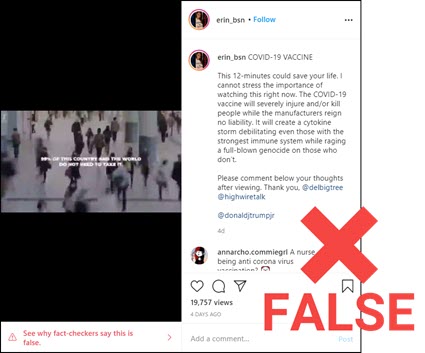 NO: The COVID-19 vaccines from Pfizer and Moderna, which have completed their third and final trial phase, will not severely injure or kill people who take them. YES: A variety of short-lived mild or moderate reactions to both vaccines — including soreness at the injection site, headaches, fatigue, muscle aches and joint pain — have been documented during trial testing. YES: The development of COVID-19 vaccines is overseen by independent data and safety monitoring boards that can stop or pause the trials over safety concerns. YES: Trials for two vaccines — from AstraZeneca and Johnson & Johnson — were halted this fall after one participant in each experienced an adverse reaction. YES: Both trials resumed in late October. 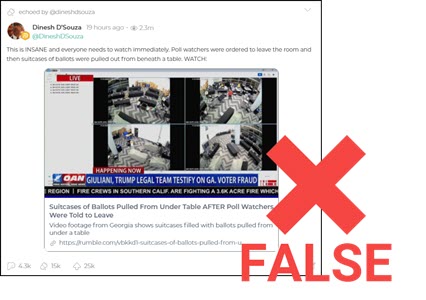 NO: The video in this post on the social media website Parler does not show suitcases of fraudulent ballots being pulled out from under a table. YES: The video shows standard ballot containers at the vote-counting center in State Farm Arena in Atlanta. NO: Election observers were not ordered to leave the room before these votes were processed or moved. YES: The ballots had previously been processed with election observers present for the Republican Party and President Donald Trump’s campaign. NO: This video is not evidence of voter fraud. 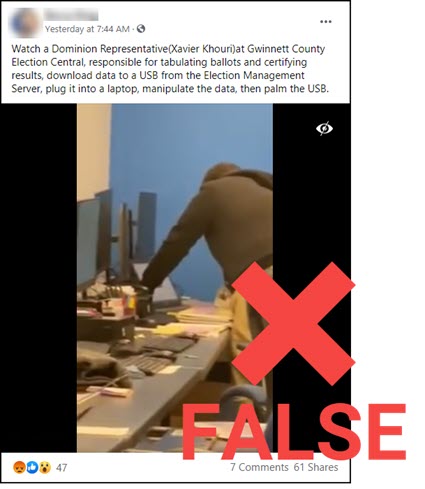 NO: This viral video does not show a contractor for Dominion Voting Systems manipulating election data in Gwinnett County, Georgia. YES: Officials say it shows a Dominion contractor transferring a thumb drive from one computer to another so that a report could be read. NO: Voting data on Dominion vote tabulating machines cannot be accessed or manipulated this way. YES: Gabriel Sterling, Georgia’s voting system implementation manager, reported that the Dominion contractor in the video, a young voting systems technician, has received death threats. 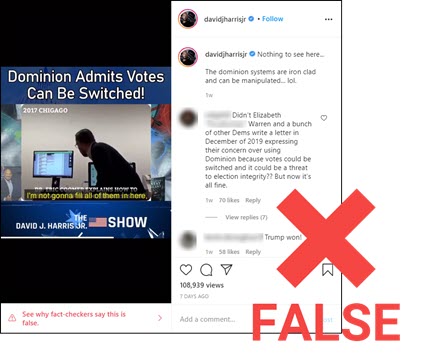 NO: This video does not show an employee of Dominion Voting Systems admitting that its election equipment is capable of manipulating votes. YES: The out-of-context video shows Dominion managers in 2017 giving a demonstration of product features that allow election officials to address issues with ballots that have been incorrectly marked, like when the oval next to a candidate's name is circled instead of filled in. NO: This is not evidence that Dominion elections equipment “can be manipulated.”  NO: President-elect Joe Biden did not forget which foot he hurt and wear a protective walking boot on both his left and right foot on different days. YES: The photo on the left in this Facebook post has been doctored to add a walking boot and a mask. YES: The original of the photo on the left was taken in November 2018 when the Bidens adopted their dog, Major, from the Delaware Humane Association: 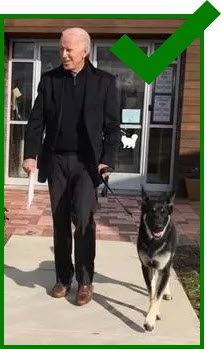 As the fact-check from Lead Stories (linked above) points out, this photo was posted to the Delaware Humane Association’s Facebook page more than two years ago. |
 |
 Fairness and balance are key standards of quality journalism. Being fair includes reaching out to main sources or subjects in news coverage to allow them to share their points of view and respond to any claims or allegations. Balance is representing all relevant sides of an issue without giving one side undue weight or legitimacy. |
|
★ Sift Picks Featured “Mapping Black Media” (The Craig Newmark Graduate School of Journalism at the City University of New York). Quick Picks “In 2020, Disinformation Broke The US” (Jane Lytvynenko, BuzzFeed News).
“Five myths about the news business” (David Chavern, The Washington Post).
“When a News Anchor Does the Government’s Job” (Ilana E. Strauss, The Atlantic).
|
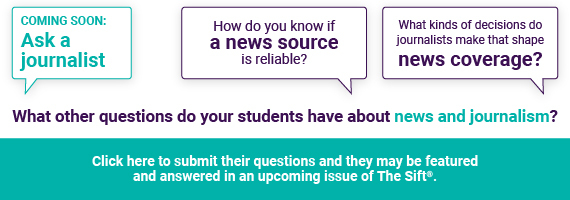 |
|
What else did we find this week? Here's our list. |
|
Thanks for reading! Your weekly issue of The Sift is created by Peter Adams (@PeterD_Adams), Suzannah Gonzales and Hannah Covington (@HannahCov) of the News Literacy Project. It is edited by NLP’s Mary Kane (@marykkane). |
|

